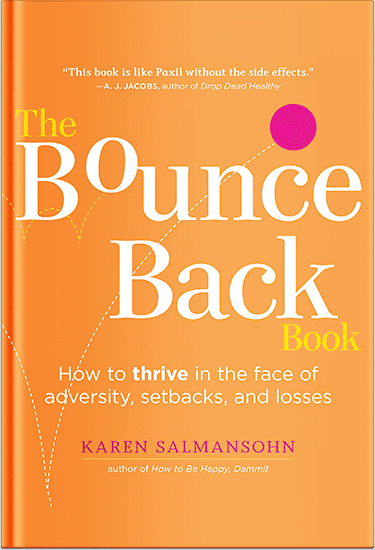 When you’re working in disability care services, then your ability to provide prompt and compassionate service as easily as possible when it’s needed is going to be a clear priority. You don’t want to keep your patients and clients waiting, but you also don’t want to rush the services you provide by any means, either.
When you’re working in disability care services, then your ability to provide prompt and compassionate service as easily as possible when it’s needed is going to be a clear priority. You don’t want to keep your patients and clients waiting, but you also don’t want to rush the services you provide by any means, either.
Here, we’re going to look at the steps that you can take to streamline how you run your disability care services, ensuring that you’re able to keep offering the highest level of care that you can while making it easier to see to all of your users’ needs as promptly and convenient as possible.
Automate Administrative Tasks
Administrative responsibilities, while essential, can consume valuable time and resources that could be better spent on client care. By automating repetitive tasks such as scheduling, billing, and documentation, your organisation can free up your team to focus on disability support delivery. It also reduces the mental strain on your team, allowing them to be more present and attentive to their clients and patients.
Automation tools can handle tasks like generating invoices, tracking payments, and managing compliance documentation, reducing the risk of human error. Additionally, automating appointment reminders for clients and staff minimises manual follow-up efforts and ensures smoother day-to-day operations. Investing in robust automation software tailored to disability care can significantly cut down on administrative overhead and help your team stay organised.
Centralize Case Management
Efficient case management is critical in disability care, where individualised plans and ongoing coordination are essential. Centralised case management, facilitated by specialised software such as NDIS software designed for the National Disability Insurance Scheme, allows you to keep all client information, care plans, and progress notes in one place. This way, it’s a lot less likely that your team will lose case and patient details, allowing them to provide the level of customised care that they deserve.
This centralisation ensures that all team members have access to up-to-date information, reducing confusion and duplication of efforts. With a comprehensive view of each case, you can easily track progress, monitor compliance, and adjust care plans as needed. Centralised systems also improve reporting capabilities, enabling you to analyse data trends and identify areas for improvement in your services.
Use Reminders and Notifications
Missed appointments and forgotten follow-ups can disrupt the continuity of care and lead to inefficiencies. Implementing automated reminders and notifications helps mitigate these issues by keeping both clients and staff informed of upcoming commitments.
For clients, text messages or email reminders about appointments ensure they are prepared and on time, reducing no-show rates. For your team, notifications can prompt timely follow-ups with clients or serve as alerts for important milestones in a client’s care plan. These systems not only improve punctuality but also demonstrate a commitment to proactive communication, fostering trust with clients and their families.
Ensure Team Coordination
Disability care often involves collaboration among multiple team members, from care coordinators and therapists to administrative staff. Ensuring that everyone stays informed and aligned is crucial for delivering seamless care. Internal communication software, such as team messaging platforms or project management tools, can help bridge gaps in communication.
These tools allow for real-time updates, shared calendars, and centralised access to documents, ensuring that all team members have the information they need to perform their roles effectively. Regular check-ins and virtual meetings facilitated by such software also encourage collaboration and keep everyone on the same page.
Reduce Waiting Times
Long wait times can be a source of frustration for both clients and caregivers. Streamlined appointment scheduling can alleviate this issue by optimising the allocation of your team’s time and resources. Smart scheduling software enables you to manage appointments more effectively by identifying gaps in the schedule and distributing workloads evenly among team members.
These tools can also account for varying appointment durations based on the complexity of each client’s needs, ensuring that sufficient time is allocated without causing delays for others. Transparent communication with clients about expected wait times further reduces anxiety and improves their overall experience.
Given the barriers to care that so many people living with disabilities have to face, it’s only right that any care provider catering to them should do what they can to make their services more accessible. This also includes making sure they don’t have to wait as long for the services that you provide. Hopefully, the tips above can help you streamline how you run your services so that you’re able to remain accessible, convenient, and proactive with those who rely on you.
P.S. Before you zip off to your next Internet pit stop, check out these 2 game changers below - that could dramatically upscale your life.
1. Check Out My Book On Enjoying A Well-Lived Life: It’s called "Your To Die For Life: How to Maximize Joy and Minimize Regret Before Your Time Runs Out." Think of it as your life’s manual to cranking up the volume on joy, meaning, and connection. Learn more here.
2. Life Review Therapy - What if you could get a clear picture of where you are versus where you want to be, and find out exactly why you’re not there yet? That’s what Life Review Therapy is all about.. If you’re serious about transforming your life, let’s talk. Learn more HERE.
Think happier. Think calmer.
Think about subscribing for free weekly tools here.
No SPAM, ever! Read the Privacy Policy for more information.
One last step!
Please go to your inbox and click the confirmation link we just emailed you so you can start to get your free weekly NotSalmon Happiness Tools! Plus, you’ll immediately receive a chunklette of Karen’s bestselling Bounce Back Book!


 When you’re working in disability care services, then your ability to provide prompt and compassionate service as easily as possible when it’s needed is going to be a clear priority. You don’t want to keep your patients and clients waiting, but you also don’t want to rush the services you provide by any means, either.
When you’re working in disability care services, then your ability to provide prompt and compassionate service as easily as possible when it’s needed is going to be a clear priority. You don’t want to keep your patients and clients waiting, but you also don’t want to rush the services you provide by any means, either.